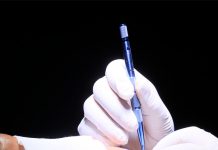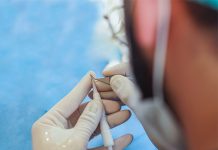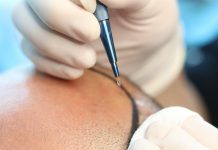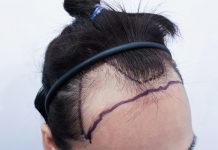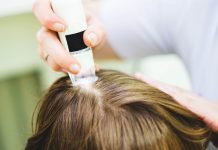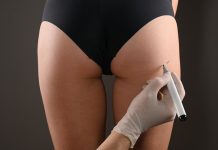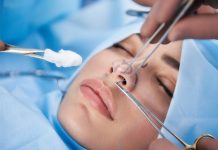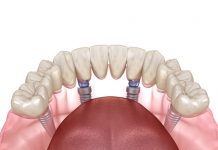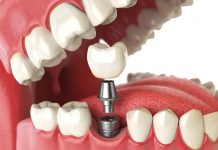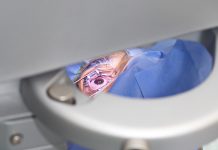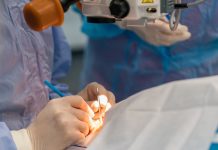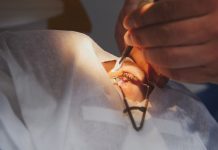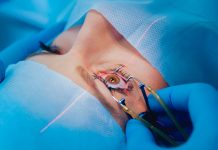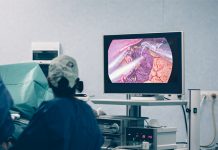Beard Transplant
Beard transplant in Turkey, its average cost, FUE or DHI Facial Hair transplantation procedures, and everything you must know on beard loss are explained.
Beard Transplant, also known as “Facial Hair transplants”, are becoming more popular as the days proceed. Beard transplant in Turkey is indeed very satisfying both in terms of before&after results and the overall cost. As another method of facial hair transplantation, beard implants are usually applied via FUE (Follicular Unit Extraction) technique. If you are a male who is not happy with the way your beard looks, this procedure might solve your problem. In such a time that one’s appearance is some sort of a tool for judgment, men with facial hair loss might feel themselves as if they are lacking, not manly enough, or out of the ordinary male image. As wounding as it may be, this issue might also result in psychological problems.
A male with facial hair loss may develop anxiety, social phobia or their self-esteem might drop below zero due to the harsh judgment and even bullying of some thoughtless people. Regardless of their appearance, people must notice that they are unique in their very own way and they do not deserve such treatment under any circumstances. Certainly, beard transplant might relieve your stress and resolve your issues. However, you should also be aware of the fact that your appearance or your physical features do not determine your worth as a person in any way. You are not obliged to alter your appearance just because other people think you should. You should want this procedure to be applied only if it is you who want it to be conducted. One should be doing that for yourself, not for anyone else.
Teenager males, especially, can think of this issue as equivalent to the end of the world. If you are a teenager who is not happy with your beard and who thinks that you are falling behind of your peers in terms of masculinity, you must absolutely consider the fact that you are merely a teenager now. In such a phase, your hormones are out of control and your body is just trying to adjust itself to those hormonal, physical, and psychological changes. These three aspects are all interrelated to each other and they change the way you see the world as well as the way you see yourself as a person. It would be your best choice to wait until you are beyond puberty when your hormones function in a harmonious way.
Reasons of Beard Loss
Beard loss might stem from several factors. If you are considering a beard transplant surgery, you must first identify the root of the problem. By doing so, you can actually know if you really need this procedure or not. Your problem might also be solved with medical treatments or lifestyle changes without the need for surgery. The main reason behind your beard loss might follow as below:
- Natural growth cycle of your facial hair: As well as your scalp and the hair on it, your facial hair has also got a cycle of its own. This cycle consists of three phases: anagen, catagen and telogen. As your new facial hair keeps growing, your skin needs to shed some of the old and weak hair. You may lose 50 to 150 beard strands in a day and that is most completely normal. It is a part of the natural cycle of your skin. If you have started to see a few strands of beard in the sink or in other places, you should know that it does not always mean you suffer from irreversible beard loss.
- Decrease in testosterone and DHT levels: Androgenic male hormones play the biggest role when it comes to facial hair growth. Thanks to testosterone, the follicles are able to handle the growth phase. After that, dihydrotestosterone (DHT) takes over and makes the hair grow by allowing elongation. If those hormones are decreased, serious thinning and loss can be observed in facial hair.
- Malnutrition: Vitamin and minerals such as biotin, vitamin D, zinc, vitamin A, magnesium, vitamin K2, vitamin E and calcium affect the strength and the density of your facial hair. If you are suffering from deficiencies regarding these vitamin and minerals, it is likely that you have thinning or falling hair, too.
- Prolonged stress: Any kind of stress makes your body release cortisol. Cortisol is widely known as “the stress hormone” among people. This hormone is capable of suppressing androgenic male hormones testosterone and DHT. In consequence, facial hair loss follows the issue. Cortisol can also cause a type of hair loss known as telogen effluvium.
- Alopecia barbae: When the inflammatory cells attack the body itself, an autoimmune disease named Alopecia areata It is an autoimmune disease and it causes those inflammatory cells to attack hair follicles. It actually affects a great deal of people. When this condition is observed on facial hair, it is named as alopecia barbae. It occurs in small circular shapes of balding areas.
Initiating the Treatment
First of all, you need to book an initial consultation appointment. In order to book such an appointment, you need to find a doctor first. While doing research, you should be careful about the clinics that advertise themselves by paying money. They might not be as qualified as they seem to be. You should carefully collect information about your chosen clinic and your doctor. You can examine their patients, before and after results, and the comments. After you decide on your clinic, you need to book an appointment. Initial appointments usually require you to pay a price since they include in-depth analysis.
Once you decide on having the procedure, your doctor will inform and guide you on the issues which are important for the operation and your recovery. You will probably be advised to quit smoking at least 6 weeks before and after the procedure, stop drinking alcohol, cut medications such as aspirin, Advil, Ibuprofen and herbal remedies/supplements. Your doctor will also need your full medical record and might want to run some tests before you finally make your mind upon surgery. You will most likely be given two options for the surgery: FUE (Follicular Unit Extraction) and DHI (Direct Hair Implementation). Of these two, FUE is the most preferred technique. You and your doctor will discuss your needs and determine which one is the best for you. Always remember that you should be comfortable with your surgeon and you should be completely open about what you exactly need.
The Day of the Surgery
You are going to be partially sedated with local anaesthesia. Depending on the technique that is decided, the application of your surgery will show differences. The procedure might take between 5 and 8 hours. You will not be required to stay at the hospital. You will be able to leave immediately. However, it is recommended that you arrange for someone in advance and they can accompany you in the post-operative phase. It takes 1 to 7 days until you recover and you can return to work or daily activities whenever you want. As for what happens during the surgery, the technique you have chosen greatly matters. The procedure can be applied in 2 ways as below:
FUE Beard Transplant
In FUE beard transplant technique, each follicular unit is taken out of the donor area as one at a time. After those follicular units are extracted, your doctor will prepare the recipient sites on your face by opening small incisions with razor blades. Following that, the follicles will be placed in the determined area. Harvesting those follicular units might sometimes take two days and therefore you might need to go through two separate sessions of surgery. This usually happens when the sections are too big. The tissue in your face usually heals after 3-4 weeks and they leave very small scars. One may not be able to detect them on the first look. They get hidden under the hairy area after a while.
DHI Beard Transplant
In DHI beard transplant method, hair grafts are extracted from the donor area. This process is conducted with a pen named Choi Pen which is capable of holding 1-4 follicles. Those extracted follicles will immediately be placed in the recipient area. However, it requires the most attention. It must be performed by an experienced surgeon. This operation will also leave tiny scars just like FUE but they will not be noticeable as your facial hair grows.
After the Surgery
Following the beard transplant, patients might feel somehow uncomfortable in the area that has been operated on. After a while, this sensation might be taken over by numbness, mild redness, or irritation. Your doctor will most probably prescribe painkillers and anti-inflammatory drugs to handle these aspects. You might also feel numbness in the donor area. Two or three weeks following the procedure, you will experience shock loss in the treated area. You transplanted hair will start to fall off. This is completely normal and it should not urge you to panic. This is a part of your hair growth cycle so that new and strong hair can grow again. It might take at least four months to see the results you expect. You should bear in mind that you need to keep your expectations realistic and you should be patient.
Recovery Period
After the beard transplant, your skin will heal nearly in 7-10 days. In some very rare cases, this might take 2-4 weeks if your skin is extremely sensitive. Swelling and redness might be of some problem during that period. In order to complete this recovery period as safely as you can, you should strictly follow the instructions of your doctor. Small scabs and crusts might appear on the operated regions of your face. They will start to fall off nearly 5 days after the surgery. If this time frame extends beyond a week, you must immediately contact your doctor. They will instruct you on the issue. Here are some do’s and don’ts regarding the aftercare:
- It would be best to take a few days off from work or school. You can feel uncomfortable with the scars of operation on your face.
- You must keep your face and the donor area as clean as possible. Otherwise, you may be at risk of developing infections and possible complications.
- You must not play with, touch, rub or scratch your face.
- If you exercise regularly, you should take a break from heavy exercise sessions and you should be avoidant of any type of strenuous physical activities.
- You should also avoid swimming, hot tubs, saunas, and steam rooms.
- Your face and the donor area on your scalp must be protected from direct sunlight as well as from extreme hot and cold. Sunlight might leave marks and increase itchiness, soreness, and swollen appearance.
- You should avoid using blood-thinning medications since they might result in bleeding. You should only use the medications that your doctor has prescribed for you.
- After 10 days, you will be able to shave your face and the donor area. However, you should be gentle in the most extreme sense.
- You must not smoke, drink alcohol, or use tobacco in any way for these are detrimentally hazardous substances during recovery.
Am I Suitable for Having Beard Transplant?
In order to have facial hair transplants, the root of your problem must first be identified. If your problem is hormone-related, your surgeon will recommend other types of treatments other than surgery. If not, though, you need to have enough hair on your body that can be extracted and implemented on the recipient site. In the event that you are balding or have no hair on your head or if you simply do not want to lend your hair to another part of your face, your bodily hear can also be used. Yet, beard transplants usually consist of the hair at the back of your head, the beard under the chin, or chest hair. In order to be fully sure about your suitability, you must book an appointment.
What Are the Advantages of Beard Transplant?
Since the issue is your face here, you might be thinking that it will hurt a lot. Yet, it is not what it seems like. Beard transplantation is a painless operation. Those incisions that are mentioned are extremely small ones, their invasiveness is minimal. Therefore, you will only feel a pinching sensation on your face.
As well as being pain free, beard transplant provides quick recovery. Getting back to your routine will not take ages. The traces of the operation such as swelling or redness will dissipate after a few days. You should also not be worried about any kind of scarring since there will be none. In addition to these, you are going to be able to grow and style your beard however you like it to be after the operation. You can shave it off if you want to, it will grow back again since the results of this operation are permanent.
What Are the Possible Disadvantages of Beard Transplantation?
The disadvantages of beard transplant are not really compromised upon. Nevertheless, one must mention them in order to shed light on the issue as a whole. In order to have beard transplants, you must have enough hair to donate to the recipient site on your face. This hair is usually extracted from the back of your head. If you are not suffering from extreme baldness, your hair at the back of your scalp will be adequately enough and the loss you have on your donor site will not even be noticeable. Another bothering point is that your newly transplanted facial hair will start falling off in approximately 3 weeks. This is completely normal and natural shedding period, usually named as “Shock loss stage” and it must happen in order for your new follicles to grow into their full potential.
What Are the Side Effects of Beard Transplant? Are They Serious Effects?
For almost all of the surgeries, there are risks and several side effects. These effects must not be neglected if they ever occur in the first place. Most of them disappear after a few days and they are not important in the least sense. Yet, some of those effects are rather rare, such as:
- Minor traces of bruising and swollen face.
- Extreme sensitivity in the donor area and the implanted area.
- Itchy sensations and irritation on the scalp.
- Face feeling numb.
- Scabs and crusts appearing on your face.
- Redness.
- Risk of infection and bleeding (it is a rare side effect).
- Infection and inflammation (rare).
- Possibility of scarring at the donor area (rare).
If you develop one or several of those rare ones, you should contact your doctor. They will handle the situation and prescribe medications.
How Long Does the Operation Take?
The beard transplant usually takes 5-8 hours. However, if your recipient and donor areas are wide, the operation might be divided into two separate sessions. In that scenario, it will take two days to complete the operation.
How Long Will the Results Last?
Beard transplant results are permanent and they last for a life time. They will look extremely natural. After the procedure is completed, the difference will be noticeable right away. After a few months, you will start to see the full effects of beard transplant.
Will the Scars on My Face Be Permanent?
The tools your doctor uses to open incisions on your face have less than 1 mm in diameter. It invades an extremely small area. Scarring, however, also depends on the skills of your surgeon. You must pay attention to your doctor’s experience, skills and certificates.
Are There Any Risks of Facial Hair Transplants?
All operations bear risks. You may experience some redness in the treatment area but it will perish in a few days. Your donor site and your face will need extra care and attention. You should be extremely gentle in every action regarding those areas.
How Much Does Beard Hair Transplant Cost?
The cost of beard hair transplant may vary from country to country, region to region and doctor to doctor. It also depends on the type and amount of your hair loss and your condition. However, the average cost of this transplantation method is usually between £1,100 – £3,600.
Will I Need to Stay in Hospital?
No. Yet, you should bring someone to you like a family member or a friend.
Will I Be Able to Go Back to Work?
It is recommended that you take a few days off from work. You can go back to work and resume your activities right away if you want to but this might take a toll on your nerves since your face will partially be red and swollen. You might feel under stress and as well as feeling uncomfortable. It might take 1-7 days until those visible changes completely disappear.
What Kind of Anaesthesia Will My Doctor Use in Beard Transplant?
This operation is generally conducted while you are sedated with local anaesthesia. If you are too nervous for such a session, your doctor might give you additional medications that will relax you.
How Is Beard Transplant Performed?
This transplantation is generally applied with FUE (Follicular Unit Extraction) or DHI (Direct Hair Implantation) techniques. You and your doctor will decide as to which one is the most suitable method for you and your needs. However, FUE is the most preferred technique when it comes to beard hair transplant. It has a much shorter recovery time.
Under Which Circumstances Am I Not Able to Get Beard Hair Transplant?
If you are currently being treated with chemotherapy of for alopecia universalis, you should a little bit more before you apply for beard hair transplant. After those treatments are over, your hair will probably start growing back shinier and stronger than before. In addition to these, if you do not have the required number of hair follicles in the donor areas (the back of your head, under your chin or your chest) you cannot undergo this treatment. You need to have adequate donor sites in order for your doctor to proceed with the operation. If your body hair and hair is completely lost, it will not be possible to have this surgery.


